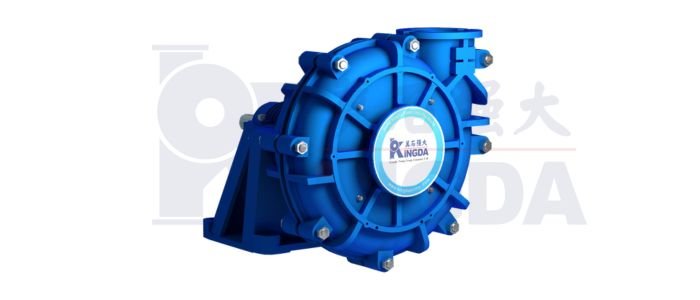Horizontal slurry pumps are powerful mechanisms designed specifically for pumping abrasive materials such as sludge, gravel, sand, and other solids. They are widely used in a variety of industries, including mining, petroleum, chemical, and construction. In this article, we will look at the basic principles of horizontal slurry pumps and their applications.
The main task of horizontal slurry pumps is to pump materials with high solids content and high viscosity. They are equipped with special rotors and stators, which provide effective movement of mixture through the pump. An important feature of these pumps is that they are able to handle abrasive materials without significant wear and damage.

The basic principles of horizontal slurry pumps include the following steps:
Reception and feeding:
The basic principles of horizontal slurry pumps include several key steps. First, the pump receives a mixture of sludge and water from the source and directs it through the inlet to the pump casing.
Then the rotor and stator begin to work: the rotor, which is usually spiral shaped, rotates inside the stator. As a result of the rotation, the rotor creates a centrifugal force that pushes the mixture through the pump. This ensures that the material is pumped. The centrifugal force created by the rotor moves the mixture through the pump housing, ensuring that the material is pumped continuously.
Finally, after passing through the pump housing, the mixture is ejected through an outlet port to the desired range or into a container for collection and further processing. These operating principles allow horizontal slurry pumps to efficiently and reliably pump abrasive materials with high solids content and high viscosity.
Rotor and stator operation:
When the pump is turned on, the rotor begins to rotate inside the stator. This rotation creates a centrifugal force that propels the mixture through the pump. The rotor, with its helical shape or blades, pushes the mixture forward, ensuring continuous material pumping.
The stator, on the other hand, supports and directs the flow of the mixture. It is specially shaped and designed to create optimal pumping conditions. The stator and the rotor work closely together to ensure efficient movement of the mixture and minimize energy loss.
Importantly, the rotor and stator are made of highly durable materials that can withstand abrasive and corrosive operating conditions. This allows the pumps to efficiently pump abrasive materials such as slurry, gravel or sand without significant wear and damage.
Material transfer:

The centrifugal force generated by the rotating rotor plays a key role in moving the mixture through the pump housing. This force ensures that the mixture is pumped in the direction of the pump outlet. Due to the special shape of the rotor and stator, the mixture with high solids content moves through the screw or vane chamber of the pump and is tightly pumped forward.
It is important to note that horizontal slurry pumps are capable of handling materials with high viscosity and abrasive particle content. They can pump sludge, gravel, sand and other solid materials without significantly reducing pumping efficiency.
The material pumping process is continuous, and the pump provides a steady flow of mixture through the pump housing. Material transfer depends on a number of factors, including rotor speed, pump geometry, mixture viscosity, and solids size.
Horizontal slurry pumps can be configured for different pumping conditions, allowing the volume and rate of material flow to be adjusted. This makes them versatile tools in a variety of industries requiring efficient pumping of abrasive mixtures.
In summary, horizontal slurry pumps pump material by rotating the rotor and creating centrifugal force that moves the mixture through the pump housing and provides reliable and efficient pumping of abrasive materials.
Material Output
After passing through the pump housing, the mixture is ejected through the outlet spigot to the desired range or into a container for collection and further processing.
Conclusion
Horizontal slurry pumps are important equipment in a variety of industries that require efficient pumping of abrasive materials. They operate based on the principles of receiving and feeding the mixture, rotor and stator operation and pumping the material using centrifugal force.
In general, horizontal slurry pumps are an important technical solution for pumping abrasive materials. Their use allows to increase productivity and reduce maintenance costs, providing effective and reliable operation in various industries


